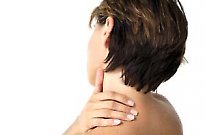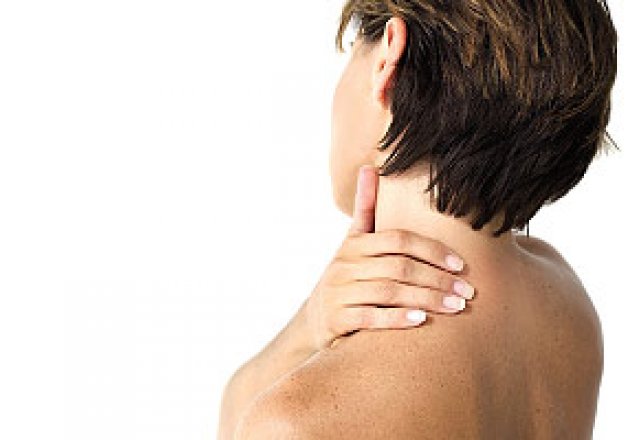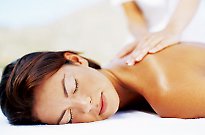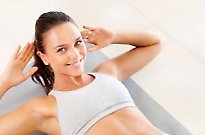
Back on track

Stiff neck? Tight shoulders? Chronic back pain? You're not alone. Liz Nowosad explores effective options to bring relief.
Back pain is one of modern life’s most common health complaints. Hours sat at a desk, excess weight (especially around the middle), stress, poor bedding and sedentary living habits can all exacerbate the problem. There are many options to explore when seeking relief, and as Melbourne based osteopath Danny Williams suggests, an integrated approach – which incorporates different healing modalities – can be an effective way to address the problem.
OSTEOPATHY
Osteopathy is a gentle, holistic therapy that works with the inherent healing mechanisms of the body to promote health within a patient. A typical first appointment will include a thorough initial assessment and a physical examination to assess alignment, followed by gentle stretching and releasing of joints, and spinal manipulation.
“Using techniques such as massage and joint mobilisation in a unique way, the body is enabled to heal fully. Following the philosophy of osteopathy, the part that hurts is not necessarily where the problem is coming from. By understanding the connectivity of the whole body system, this modality is able to find the source of the problem and provide long-term relief,” explains Back on track Osteopathy, Melbourne.
Tried, tested, and recommended: Danny Williams, The travelling Osteopath, www.thetravellingosteopath.com
REMEDIAL MASSAGE
“Massage helps you to remain or become free of tension and pain by loosening muscles and increasing flexibility and is a very effective part of treating injuries and musculoskeletal conditions,” says Evan Hawkey, Remedial Massage Therapist and founder of Musclefix, Melbourne.
Connective tissue, also known as fascia, can be relieved very effectively through soft tissue therapy. This can alleviate old, lingering and chronic types of back pain. General massage or soft tissue therapy is also very effective in treating the actual muscles, relieving tension and working through trigger points as well as looking at short and tight muscles – which pull on and lengthen other muscles, causing an imbalance in the skeletal structure, resulting in pain.
Tried, tested, and recommended: Musclefix, Melbourne (clinic based in Sandringham, mobile massage available Melbourne-wide) www.musclefix.com.au
ERGONOMICS AT WORK
Andi Lew, chiropractic assistant and co-author of 7 Things Your Doctor Forgot To Tell You has the following advice for your desk set up, because she claims that “spending a few moments to make simple ergonomic changes to your work environment will improve your comfort, minimise back, neck and shoulder pain and increase productivity.
“At the end of the day you will feel much less tired and stiff, both physically and mentally, and have more energy,” claims Andi.
The Keyboard
Position it above your lap.
Ensure that you can type with your arms relaxed and close to your body, elbows bent at 90 degrees, and your wrists level.
The Computer Monitor
Position it directly in front of you.
Keep it free of dirt and smudges, to create less glare.
Don’t have the computer screen too low. It should be at eye level or even above to maintain the natural ‘banana-bend’ curve in you neck.
Constant focus causes eyestrain. Allow the muscles in your eyes to relax by taking a 20 second break every 20 minutes, and gaze at an object 20 feet away from you.
The Mouse
Some people have an unconscious vise-like grip on the mouse, as if it’s alive and trying to get away. Try using a light grip, and you’ll do more with less strain.
When you move the mouse, try to move your arm from the elbow rather
than the wrist.
The Telephone
Use your hand to support the telephone against your ear.
Alternate ears frequently.
Never cradle the phone between your ear and shoulder.
The Chair
Sit upright, with your bottom against the back of the chair.
For extra support and comfort, you can purchase a lumbar roll or roll up
a towel and place it against the arch of your back.
Your chair's height should be adjusted so that your knees are bent at a
90-100° angle, with your feet touching the floor.
IYENGAR YOGA
In the Iyengar tradition, emphasis is placed on precision and alignment in all asanas (postures), whether they are standing, sitting, twisting, inverted, forward bending, backward bending or supine postures.
In the Iyengar system, classical yoga asanas are taught, aided when necessary by various props. This innovative use of props - belts, bricks, benches, chairs (and others) has made the yoga accessible to everyone, regardless of age, flexibility or infirmity.
Iyengar yoga founder Mr BKS Iyengar explains, “The yoga asana practised with props is unique in that it is the only form of exercise that allows both action and relaxation simultaneously. It activates the muscles, tones the body's organs and relieves undue mental and physical stress and strain. Props help to increase flexibility and stamina and, at the same time, relax sick and tired muscles. They help to rejuvenate the entire body, without increasing physical fatigue.” BKS Iyengar has relentlessly researched and experimented with a large range of medical problems and worked closely with cardiologists, immunologists and orthopedists in the evolution of his therapeutic application of yoga.
Tried, tested, and recommended: Beginners course at St Kilda Iyengar Yoga School, Melbourne, (www.skys.com.au)
AT-HOME PAIN PREVENTION
Some simple tips to help with back pain at home include meditation, to calm the entire body and help relieve stress symptoms, gentle stretching, simple yoga techniques and regular core-strengthening exercise. A hot bath, shower or heat pack can be a great way to relieve tension and help ease tired and sore muscles in the back.
Sitting and sleeping properly are vitally important.
SIT WELL
“Slumping – and sitting up too straight – are equally bad for your muscles and joints,” says osteopath Danny Williams. “Sitting bolt upright forces your muscles to contract in an unnatural way and is just as likely to cause problems as slouching. If you aren’t sure what a correct posture should feel like, particularly when sitting down, try to visualise the following: Imagine your pelvis is the hull of a boat (weight resting on your sitting bones), and your spine is like a mast. Your head should float at the top of the mast, and you shouldn’t feel any tension at all. If this feels tricky in a chair, try it on a Swiss ball.”
CHECK YOUR BED
“Assess your bed,” advises Danny. “There is no such thing as the ideal mattress – it depends on you. If you have a soft, flexible body, a very firm bed will be uncomfortable and too rigid. But if you’re fairly stiff, you’ll find a hard bed supportive. Generally, the more springs a mattress has the better, and opt for the firmest one you find comfortable. You can always soften it with a mattress topper under your sheet.” NH


